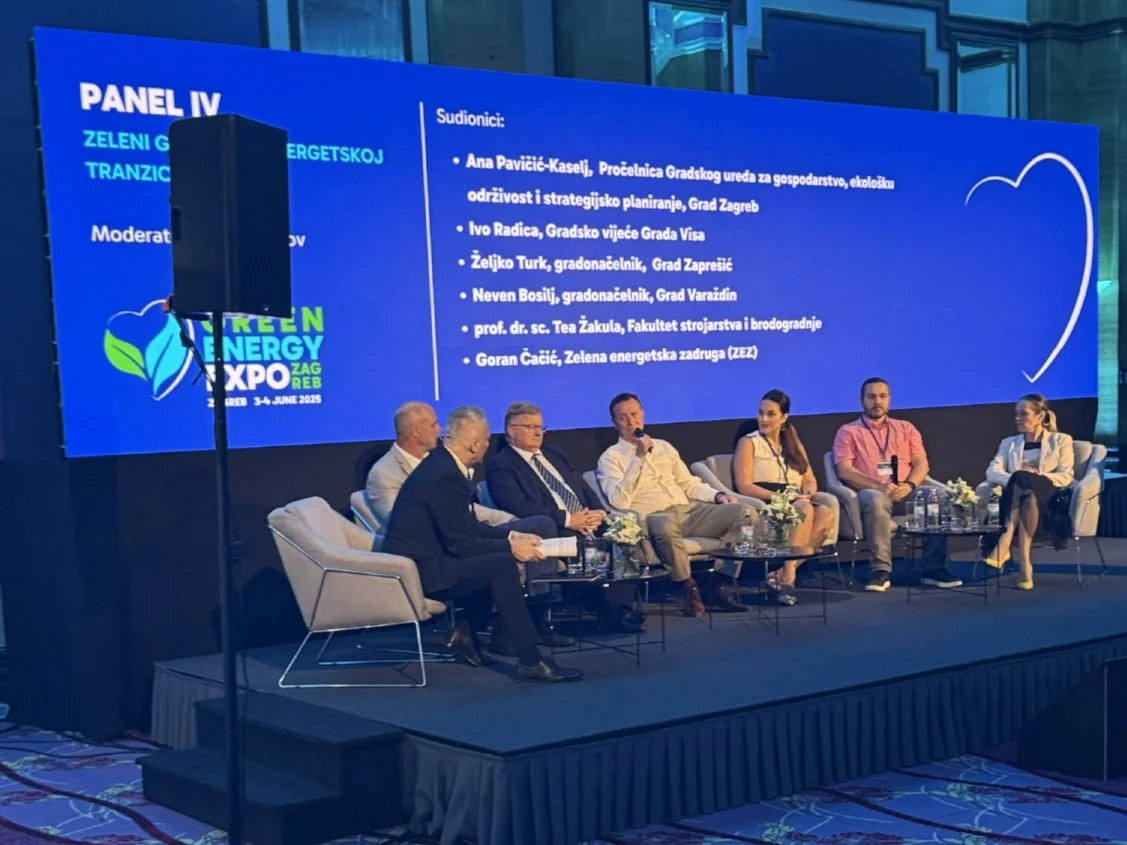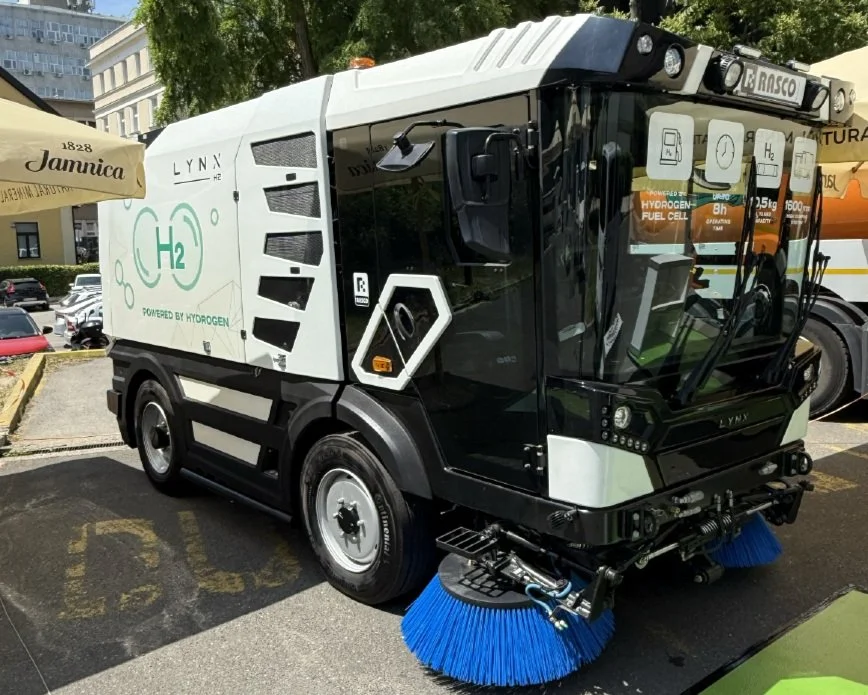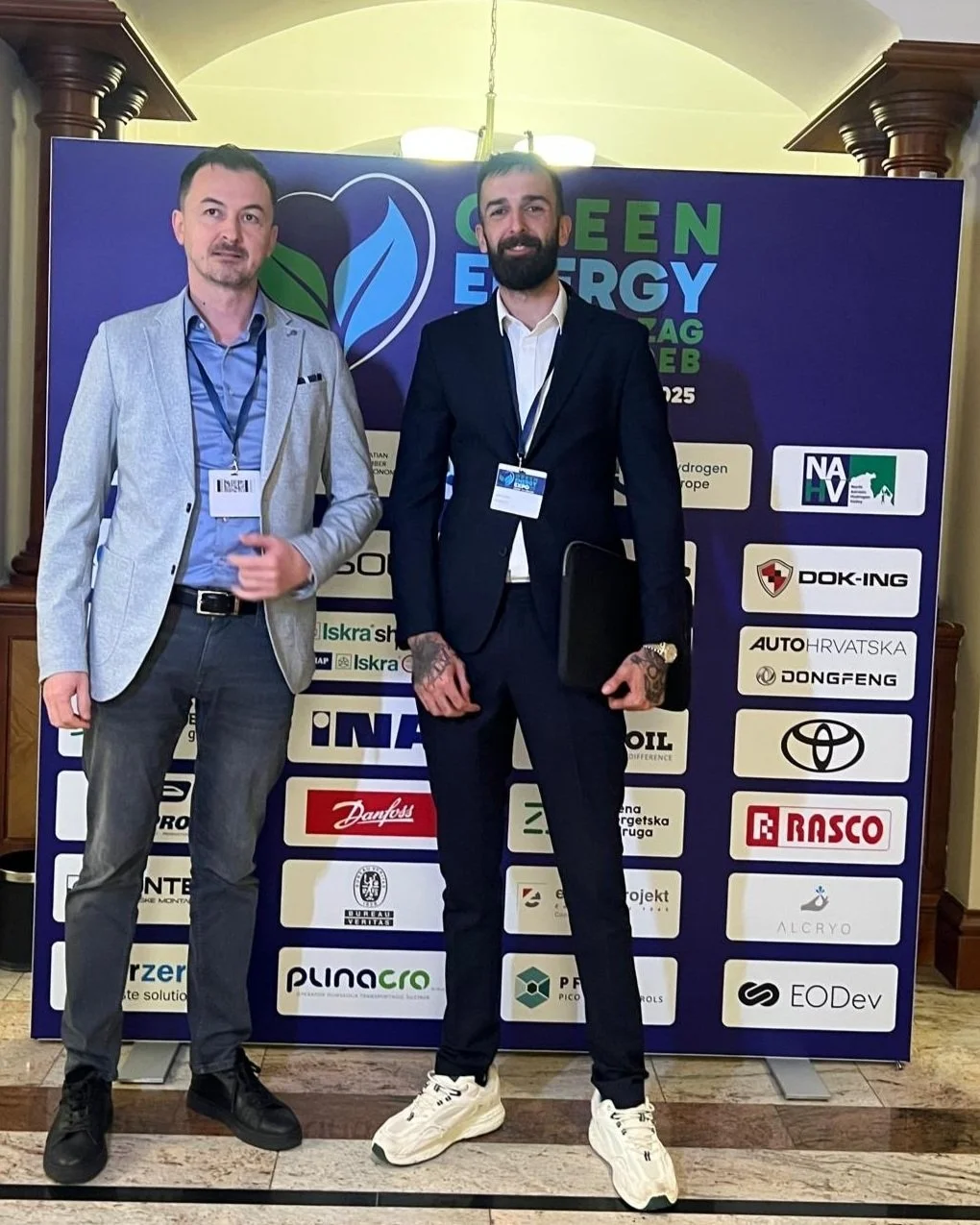Green Energy Expo 2025 – Reflections from Zagreb
A few weeks ago, on June 3rd and 4th, the Green Energy Expo 2025 was held at the Westin Hotel in Zagreb, organized by Mr. Jakić and the Hydrogen Cell Croatia association. The event gathered a wide range of participants – representatives of municipalities, cities, utility companies, and large corporations – all engaged in the transition to green energy, with a special focus on hydrogen technologies.
As a visitor representing Solarwatt, I had the opportunity to attend panel discussions, explore the latest hydrogen-related technologies, and network with many key players in the Croatian energy sector.
Reflections on the Panels: Substance, Gaps, and Untapped Potential
One of the central elements of the Green Energy Expo 2025 were its structured panel discussions, covering topics from hydrogen implementation to waste-to-energy solutions, energy storage, and green city transitions. While the breadth of topics was impressive and the panels well-organized on paper, the execution varied significantly across sessions.
For example, Panel 1 – “The State and Outlook of Green Energy Amid Global Shifts” featured a solid lineup, including representatives from the Croatian Ministry of Economy, KONČAR, and Hydrogen Europe. The session laid a broad foundation for understanding where Croatia stands in the context of global energy transition, although it leaned more toward institutional positioning than concrete technological pathways.
Panel 2 – “Hydrogen Applications Today and Tomorrow” was particularly relevant for those of us working directly in the hydrogen value chain. With participants like RASCO, Toyota, and Plug Power, the discussion had real potential for showcasing field experience and technological readiness. However, due to time limitations and a broad scope, the conversation occasionally remained at a general level, missing an opportunity to dive deeper into real-world use cases or infrastructure bottlenecks.
Panel 3, focused on sustainable energy technologies such as batteries, solar, and wind, highlighted the growing interdependence of hydrogen with other renewable technologies. It was encouraging to hear from players like ENNA NEXT, SOLVIS, and Auto Hrvatska, though the session occasionally felt like a catalogue of technologies rather than a cohesive strategic dialogue.
But perhaps the most anticipated session — and the one that left the strongest mixed impression — was Panel 4: “Green Cities in Energy Transition”, held on June 4. As someone who closely follows municipal-level sustainability initiatives, I had high hopes for this discussion. The topic was timely, and the role of cities in driving the hydrogen economy cannot be overstated.
However, the session was marked by several gaps. Notably, Zagreb’s mayor Tomislav Tomašević was listed but did not attend, and other key representatives were absent or replaced last minute. While a few panelists offered grounded, constructive insights (such as representatives from Čakovec and Ludbreg), others either strayed off-topic or failed to engage meaningfully with hydrogen as a central theme. At times, the discussion drifted toward generic sustainability statements, missing the chance to discuss how cities could actively build or co-finance hydrogen refueling infrastructure, procure hydrogen-powered public fleets, or integrate hydrogen into urban energy planning.
Panel 4 - Green Cities in Energy Transition
The takeaway? While the Expo succeeded in bringing together a critical mass of stakeholders, there’s still a visible gap in understanding hydrogen at the municipal level. Panels like these could be key platforms for knowledge transfer — but only if future editions ensure that invited speakers are both present and well-prepared to engage on the core topics.
Highlight Moments on the Exhibition Floor
The exhibition at events like Green Energy Expo serves as the practical counterpart to panel discussions — it brings concepts to life. Visitors can see, touch, and engage with real-world technologies: from hydrogen trailers and refueling stations to fuel cells, vehicles, and energy storage systems. This hands-on exposure is invaluable, especially in a sector where many stakeholders are still unfamiliar with the operational realities of green energy solutions.
Hydrogen Trailer & Fueling Station
One of the more surprising innovations for me, came from Ledon Group, who showcased a new modular hydrogen transport trailer. Unlike traditional high-pressure trailers, this design uses a series of smaller tanks arranged in a modular format. This offers greater flexibility for loading, transporting, and handling hydrogen, especially in urban or decentralized supply networks. Modular trailers can also better accommodate different capacity needs and regulatory frameworks – a practical step forward for markets like Croatia, where the hydrogen infrastructure is still developing.
Toyota’s fuel cell
At the Toyota exhibition stand, what drew considerable attention wasn’t a hydrogen-powered vehicle — but rather a standalone hydrogen fuel cell system, presented outside of any vehicle platform. This modular fuel-cell unit, compact in design and visibly self-contained, represents the core technology used in Toyota’s hydrogen vehicles, but also increasingly adapted for stationary and auxiliary power applications. While it was not demonstrated in operation, its presence provided a rare opportunity for visitors to observe the internal architecture of a fuel-cell system up close. It served as a clear educational tool, demystifying how hydrogen is converted into electricity and emphasizing the versatility of fuel-cell modules — whether for cars, trucks, or even grid-independent power supplies.
Toyota’s fuel cell
Rasco’s Hydrogen-Powered Utility Vehicle: Lynx H2 5000
One of the standout innovations in Croatia is the Lynx H2 5000, a hydrogen-powered street sweeper developed by RASCO, a company based in Kalinovac. Presented in 2024, this is Croatia’s first commercial hydrogen vehicle, designed for municipal cleaning tasks.
Lynx H2 5000
The Lynx H2 5000 is based on RASCO’s earlier electric model (Lynx Charge), but swaps out large batteries for hydrogen fuel cells. The vehicle can operate up to 8 hours on a single hydrogen fill, covering a full municipal shift.
Compared to its diesel and electric predecessors, this model features a larger waste tank (5 m³) and a sweeping width of 3.5 meters. Despite increased capability, it remains compact and agile for city streets. The Lynx H2 5000 weighs about 11.5 tons, making it the first commercial fuel-cell sweeper globally in this weight class.
The system includes hydrogen fuel cells and a battery pack. It carries about 10.5 kg of hydrogen at 700 bar, powering electric motors with over 200 kW total output. According to RASCO CEO Ivan Franičević, the vehicle uses cutting-edge technology even by automotive standards.
The Lynx H2 5000 debuted internationally at IFAT 2024 in Munich. It confirmed that Croatian companies can develop world-class hydrogen tech. However, the vehicle is currently intended for export. It is unfortunate that this hydrogen-powered street sweeper will not be operating on Croatian streets anytime soon, despite being developed domestically. The lack of support from cities, municipalities, and public infrastructure planners means that groundbreaking innovations like this often find their first real-world application abroad rather than at home.
What’s next for hydrogen-powered ships?
During the Expo, representatives from Jadrolinija, Croatia’s largest passenger shipping company, shared a key update: the company has decided to discontinue its hydrogen-powered ferry project and instead shift its strategic focus toward e-methanol as the primary candidate for decarbonizing short-sea shipping in the near future.
This shift marks a pragmatic realignment of technological priorities. Given the current absence of hydrogen bunkering infrastructure in Croatian ports, alongside the complex regulatory and safety requirements of operating high-pressure hydrogen systems at sea, e-methanol offers a more immediately implementable solution. It is a liquid at ambient conditions, compatible with existing marine fueling systems, and significantly easier to handle, store, and transport than gaseous or cryogenic hydrogen.
While the hydrogen-powered ferry concept was undeniably ambitious and forward-thinking, Jadrolinija’s decision reflects a growing consensus in the maritime sector that e-methanol may serve as a vital transitional fuel. Produced from green hydrogen and captured CO₂, e-methanol combines climate neutrality with operational simplicity, allowing shipping operators to decarbonize without requiring radical changes to onboard propulsion systems or port logistics.
From our perspective, this is not a defeat for hydrogen, but rather a signal that the maritime sector is adapting intelligently to the current maturity of technologies and infrastructure. Hydrogen still holds long-term promise, especially for larger vessels and intercontinental shipping. But for short-haul routes, ferries, and regional fleets, e-methanol presents a credible and scalable path forward.
Final thoughts
Overall, Green Energy Expo 2025 was a well-organized and worthwhile event. I left feeling optimistic about the technical progress being made and the connections formed through networking. However, I also left with a sense of disappointment over Croatia’s sluggish approach to green hydrogen and the lack of serious commitment from some key stakeholders.
At Solarwatt, we remain committed to the green transition – in Croatia and beyond. Events like this show us both how far we've come, and how much work we still have ahead. Let’s hope that next year, the conversation will be even more focused, more informed, and more ambitious.
Solarwatt representatives




